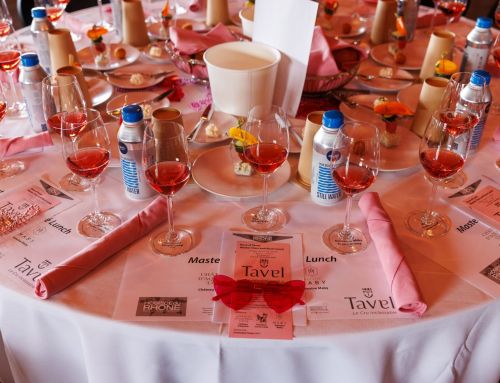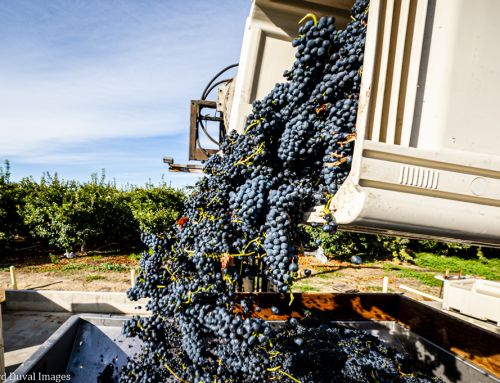 One of the myths I hear frequently about cork taint is that the cork is not necessarily the most likely culprit. While true, in theory, that cork taint can come from other sources, in practice this is rarely the case in my experience. I will provide data-driven examples.
One of the myths I hear frequently about cork taint is that the cork is not necessarily the most likely culprit. While true, in theory, that cork taint can come from other sources, in practice this is rarely the case in my experience. I will provide data-driven examples.
What is TCA and where is it found?
Cork taint is most commonly caused by trichloroanisole, TCA, although there are a host of other musty aroma compounds. It makes wine smell and taste to greater and lesser degrees like a moldy basement. Cork taint also mutes aromas and flavors. (Read everything you ever wanted to know about cork taint.)
In the winery, TCA can potentially be found in a number of places. It can come from natural cork closures. It can come from contaminated barrels. If proper precautions aren’t used, it can be found in drains. One can routinely see it in carboard boxes and paper shippers. It can also potentially be found in certain equipment used to transfer or filter wine. The wood of a winery itself could even be contaminated. (NB: This is not to say that all of these sources of contamination might affect the wines themselves.)
Looking for cork taint from non-cork sources
How many of those possibilities are actually leading to cork tainted wines that make their way out into consumers’ hands? To answer that question, I looked at data from tasting wines for review from 2015 to 2021. (2022 data are not available due to a hard drive failure.) This included approximately 10,000 wines, the majority of which were closed by natural cork, though a significant percentage were closed by screwcap and other guaranteed TCA-free closures.
When wineries submit for review, they typically send two bottles of each wine. They do this in case the first bottle is corked tainted, or there is some other issue.
Looking at submitted wines, we can assume that if TCA were coming from some larger problems at the winery, as opposed to just an individual cork, both the first sample and the second sample of a wine would be contaminated. Similarly, we can assume that cases where a first sample is cork tainted and the second sample isn’t, the taint is coming from the cork.
We can also assume that all TCA taint found in screwcap wines or guaranteed TCA free closures (synthetics, micro-agglomerates, etc.) is coming from a larger source. These include the sources described above.
What does the data say?
During the period referenced above, I sampled 357 wines that were tainted by TCA or some other musty contaminant. (For those keeping track at home, that’s nearly 30 cases of cork tainted wine.) In how many instances was the second bottle TCA tainted or the wine was under a TCA-free closure, indicative of a larger problem?
22
So the maximum rate of contamination by non-cork sources based on my tastings is 6.16%. This would say that, at minimum, of 94% of the time, TCA contamination is coming from the cork. (Note: I subtracted instances where a first bottle was corked but a second bottle was not sent.)
Caveats
There are important caveats to this number, in addition to the assumptions above. First, winemakers know that there can be instances where bales of cork are contaminated. While many take precautions to limit this, it can still occur. When it does, you will see a run of corks together that are TCA contaminated. Those bottles will also often be shipped together.
Surely that accounts for some of the 22 wines I mention above. That is to say, the contamination was still coming from the cork. It was just a contaminated group of corks rather than a systemic issue.
Additionally, there have historically been two closure types – non-certified TCA-free micro-agglomerated corks and twin top corks (also known as 1+1 corks) that, until recently, had dramatically higher contamination rates.
Why were these closures such a problem? In the case of non-certified TCA-free micro-agglomerated corks, cork granules are ground up and then held together by some type of binder. If one does not take a step to remove TCA and other moldy contaminants prior to doing this, then a contamination that would typically be in a single cork gets spread around to many different corks. (This is why companies like DIAM add a step to remove this possibility.)
In the case of twin top or 1+1 corks, these have natural cork ends and then agglomerated cork in between them. The same problem existed as above, as contamination in the ground up cork was spread to many different closures. As a result, the agglomerated corks and twin top corks had a much higher contamination rate. (The high contamination rates in both of these products has recently been solved by the industry.)
What does the data say when removing closure types with a high contamination rate?
Of my 22 bottles where both the first and second sample were cork tainted, how many were using agglomerated or twin top closures known to have a high contamination rate? 13 of them.
If we assume that all of those bottles were tainted by a closure known to have a high contamination rate (a far from airtight assumption), then the actual contamination rate coming from sources other than the cork goes down to 2.5%.
Finally, if I only look at wines where I know that there was some type of larger contamination issue, either because I reached out to the winery about the cause or the wines were under screwcap, the total number of wines drops to 7, or 2.0%.
Final thoughts
Granted, there are a number of assumptions here. That said, what is the percentage of corks that I have seen that could possibly have been contaminated by some source other than the cork? At maximum, it would be 6.16%, and at minimum it would be 2.0%. Either way, it tells us that the vast majority of TCA taint is coming directly from the cork itself.
Bottom line, can cork taint come from other causes at the winery beyond the cork? Surely it can, and it does. However, in most cases, this is being caught in the winery before it ever makes it out into the wild.
Based on my tastings, it appears that almost all cork taint that consumers see is coming from the cork itself. To say otherwise is only another attempt to deflect culpability.







U obviously aren’t aware of the problem that brought taint to the forefront at BV n cost huge bucks to rectify.
Mike, the BV case is certainly an example of winery contamination, albeit one from more than two decades ago. As stated in the article, winery contamination *can* happen. Those wines making it out into the wild, however, is extremely rare in my experience. Using a 20+ year old example only further supports that notion.
Very interesting. I wonder why the industry still uses such flawed stopper material. On top of that, there is the huge issue of variability of oxygen transmission rates in natural cork that leads to random premature oxidation.
50 years of tasting, drinking, collecting and making wine and I continue to learn new things all the time! Thanks for a great article, Sean…and all of your research i.e. compilation of information…and tasting of all those wines. Not an easy job…and tough on the palate.
Nothing worse than opening an aged bottle, you’ve patiently been waiting years for, only to have be corked.
I haven’t found the TCA Free claims to hold up. No manufacturer has more than a guarantee to make good on a tainted bottle, AFTER you send it to them and their lab verifies it’s above some level. That level is not zero.
They also won’t reveal what plastic forms the matrix. Agglomerations are not compostable or recyclable. Landfill so they can claim outrageous Carbon Capture levels.
Believing cork producers about closure issues is like believing the CEO of Smith and Wesson when he says unregulated assault rifles aren’t an issue.
Follow the money.
Proudly wood free. Satisfaction guaranteed. No strings.
Paul Vandenberg
Paradisos del Sol Winery and Organic Vineyard
Paul, thanks for the thoughts. For DIAM closures, I can say I’ve had well over a thousand wines with that closure. I’ve never had a tainted bottle. It’s possible obviously, but to the extent it happens, it’s not coming from the cork. The technology is that good.
For the one-by-one tested natural corks, “Guaranteed to be TCA-free or your money back!” (Well, are they are aren’t they? If they are, why would you need to give me my money back?), I’ve had more than a few tainted bottles with those closures, much to the consternation of winemakers. Most weren’t mildly tainted either. Perhaps the testing/technology will get better, but whether it’s humans doing it or GCMS, I don’t think the one-by-one testing is money well spent.
As outlined above, natural corks aren’t any more recylable than agglomerates. They do have the benefit that they will, eventually degrade. That said, you can’t put them in compost. So the reality is that they are all winding up in landfill too, unless people take them to a collection center for upcylcing. However, we know it’s a tiny fraction of people that actually do this at present.
Thanks. I;ve been wondering too . Had 2 or 3 agglom corks recently with TCA (out of maybe 50 total corks? over 2 or 3 years, but, can’t recall if any more than that over last 10+ years strictly anecdotal/memory). Don’t think ever had a tca from a plastic or screw.
Salud Sean,
I certainly don’t pull as many different stoppers as you!
My experience with DIAM is not recent but I was finding TCA issues in a neighbors wines. A place where the three principles were unable to detect the issue of TCA elven at high levels.
In my experience wineries that track and test get fewer stinky stoppers. It has improved.
I don’t participate in any tasting where a bottle suspected of cork taint gets a second chance.
Still looking for other wineries that want to get to a 300 gram bottle.
Paul Vandenberg
Paradisos del Sol Winery and Organic Vineyard
With 10,000 samples there is a non-zero chance that you will get 2 bad corks due to cork TCA alone. If the TCA incidence in a bottling run is 3% the chance of getting a second bad cork is 3%x3% or 0.09% or 9 in 10,000. So the non-cork TCA rate is vanishingly small.
A word of wisdom to anybody who opens or pours: I ALWAYS test before offering to anyone, in a small group, at a trade tasting, on a sales call. Occassionlly I run into a half empty bad bottle at a tasting, and I quietly mention to the pourer it is bad. The reactions range from “oh, gee, thanks” to “go away”. Oh well.